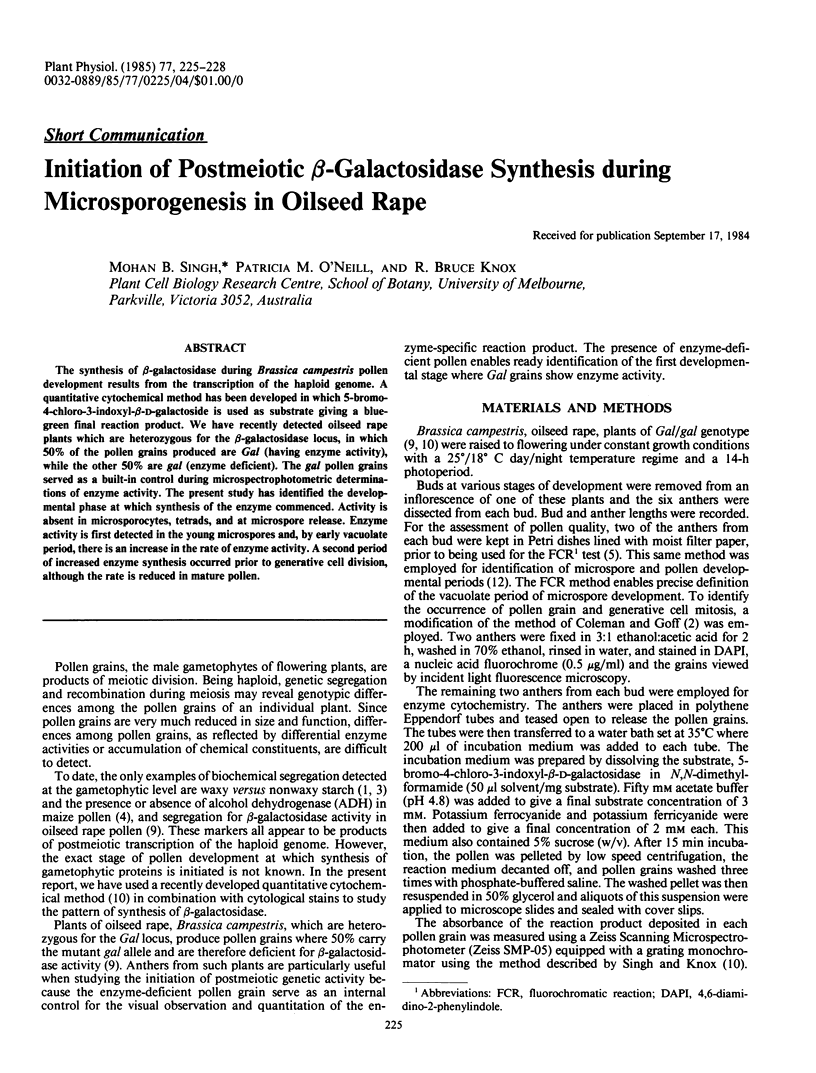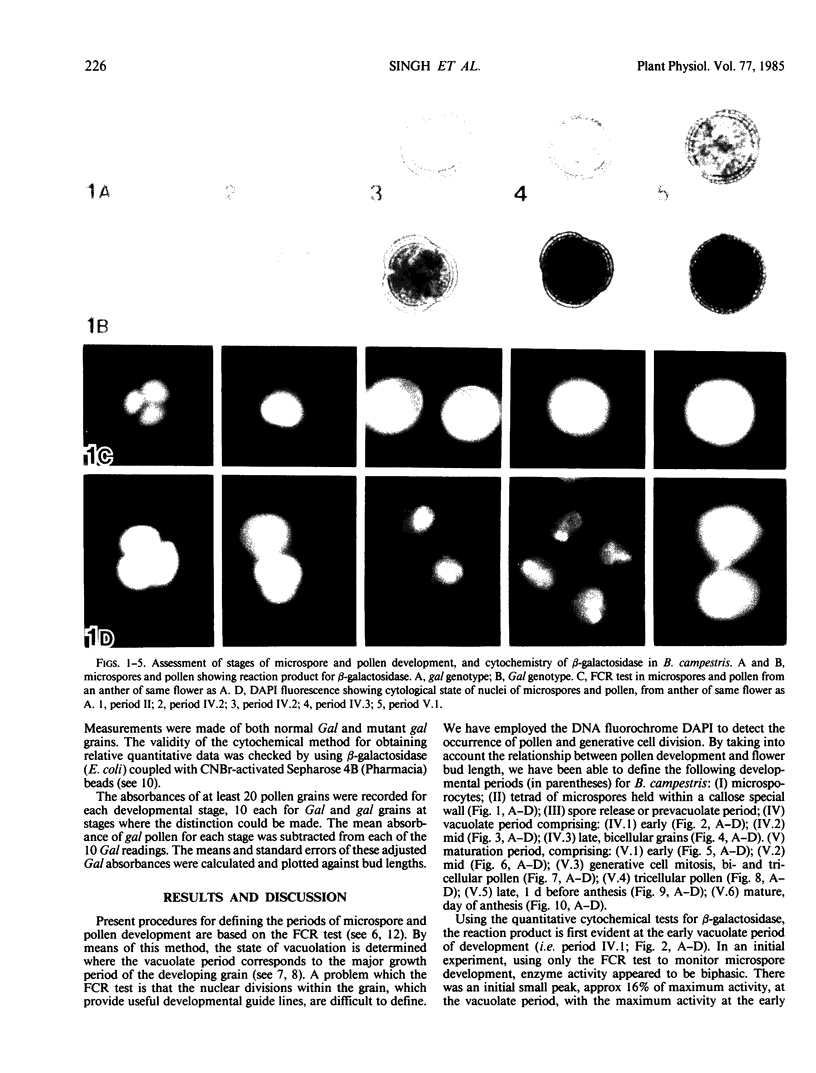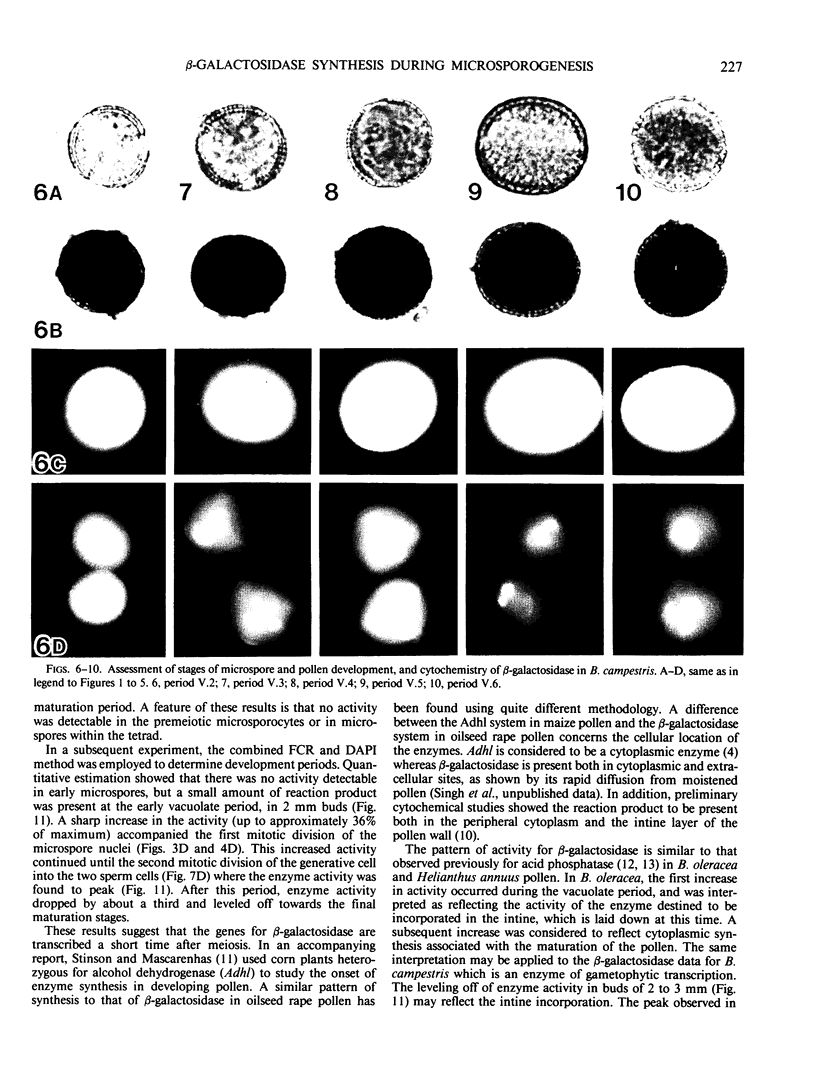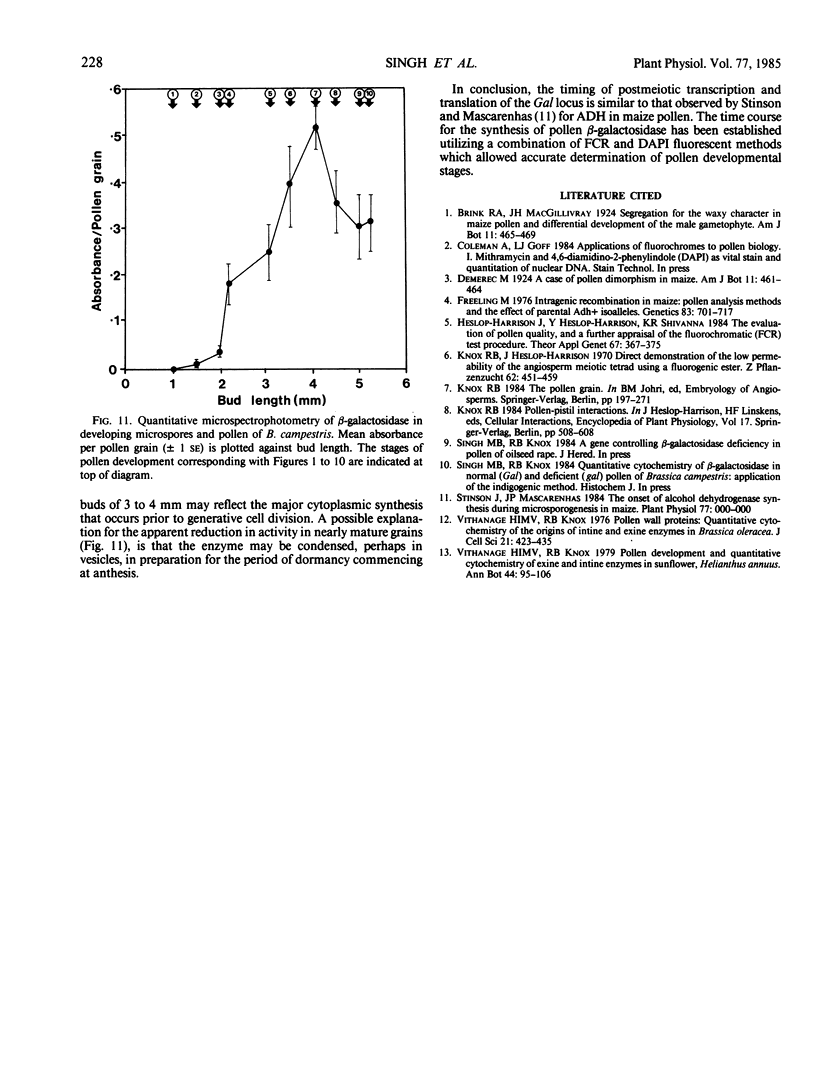Abstract
The synthesis of β-galactosidase during Brassica campestris pollen development results from the transcription of the haploid genome. A quantitative cytochemical method has been developed in which 5-bromo-4-chloro-3-indoxyl-β-d-galactoside is used as substrate giving a blue-green final reaction product. We have recently detected oilseed rape plants which are heterozygous for the β-galactosidase locus, in which 50% of the pollen grains produced are Gal (having enzyme activity), while the other 50% are gal (enzyme deficient). The gal pollen grains served as a built-in control during microspectrophotometric determinations of enzyme activity. The present study has identified the developmental phase at which synthesis of the enzyme commenced. Activity is absent in microsporocytes, tetrads, and at microspore release. Enzyme activity is first detected in the young microspores and, by early vacuolate period, there is an increase in the rate of enzyme activity. A second period of increased enzyme synthesis occurred prior to generative cell division, although the rate is reduced in mature pollen.
Full text
PDF



Images in this article
Selected References
These references are in PubMed. This may not be the complete list of references from this article.
- Freeling M. Intragenic recombination in maize: pollen analysis methods and the effect of parental adh1 isoalleles. Genetics. 1976 Aug;83(4):701–717. doi: 10.1093/genetics/83.4.701. [DOI] [PMC free article] [PubMed] [Google Scholar]
- Vithanage H. I., Knox R. B. Pollen-wall proteins: quantitative cytochemistry of the origins of intine and exine enzymes in Brassica oleracea. J Cell Sci. 1976 Jul;21(2):423–435. doi: 10.1242/jcs.21.2.423. [DOI] [PubMed] [Google Scholar]




